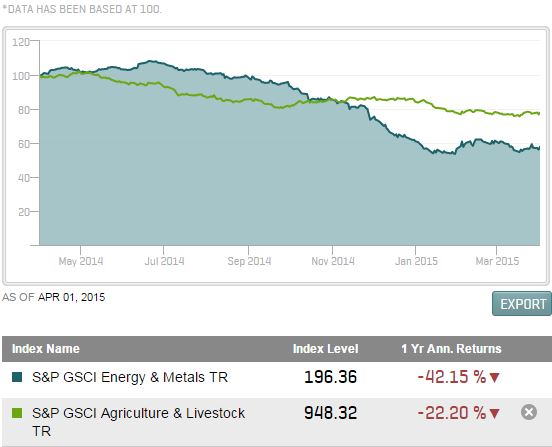This can be due to the scarcity factor of commodities “in the ground” but rather than a constant premium for scarcity, Jacks observes that typically, cycles in commodities “to be grown” are preceded by those “in the ground”. This time may be different from the transition of fixed capital accumulation to a consumption-based economy and suburbanization, but relies on the success of the CPC (Communist Party of China.) If the suburbanization is successful then we may see an increase in demand for goods “to be grown” and an inflection in long-run trend and we may also observe below-trend prices for goods “in the ground” and formation of new cycle in medium run.
It is difficult to see these long-term cycles since the shorter term trends in place are noisy, particularly for the “to be grown” commodities. The prices are sensitive to immediate inventories driven by the balance of the individual supply and demand models where supply is impacted by the planting decisions, weather patterns, crop disease and technology that determine the crop yields from season to season.
For example, below is the chart of the one-year index levels of the S&P GSCI Energy & Metals versus the S&P GSCI Agriculture & Livestock:

Yesterday, the USDA (U.S. Department of Agriculture) released Prospective Plantings report, one of its most important reports of the year. Soybeans in the index rose 57 basis points but corn and wheat fell 4.6% and 3.4%, respectively, after farmers were seen cutting their corn plantings by 500k acres less than expected even as supplies grow to highest levels in nearly 20 years. Today, corn and wheat rebounded, gaining 1.5% and 3.1%, respectively while soybeans continued to rise 1.7%. The next factors that may impact the crops are short term weather patterns and conditions that impact crop yield.
However, when thinking of long-term investing, it is important not to miss the forest for the trees and remember the asset class is providing diversification and inflation protection through time. Long-term investors like pensions may be able to use the points in the cycle rather than the short term trends to identify true opportunities that may help meet long-term liabilities.
This article was written by Jodie Gunzberg, global head of commodities, S&P Down Jones Indices.
© S&P Dow Jones Indices LLC 2013. Indexology® is a trademark of S&P Dow Jones Indices LLC (SPDJI). S&P® is a trademark of Standard & Poor’s Financial Services LLC and Dow Jones® is a trademark of Dow Jones Trademark Holdings LLC, and those marks have been licensed to SPDJI. This material is reproduced with the prior written consent of SPDJI. For more information on SPDJI, visit http://www.spdji.com